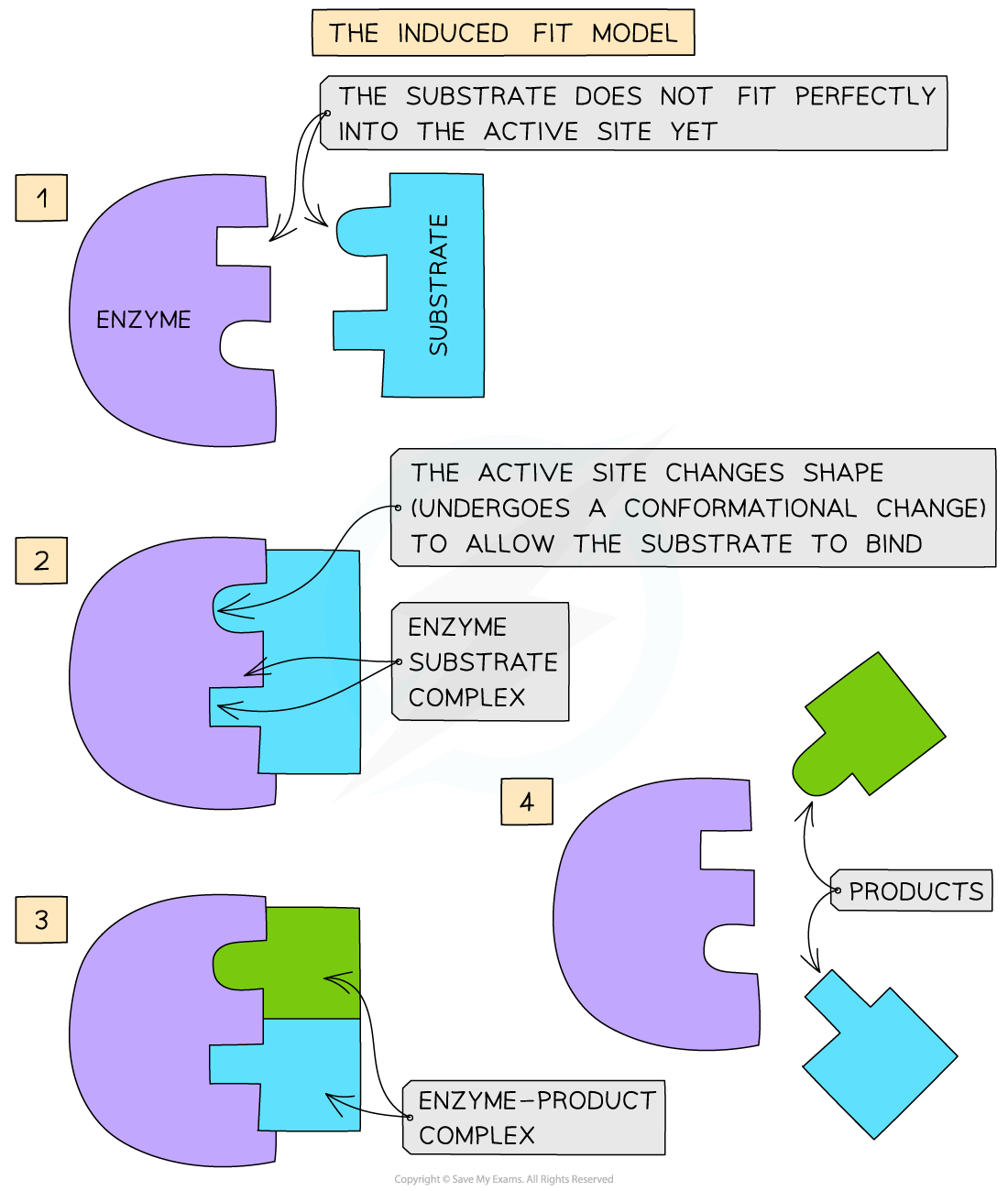Models & Functions of Enzyme Action (AQA A Level Biology)
Revision Note
Written by: Lára Marie McIvor
Reviewed by: Lucy Kirkham
Students should be able to: Appreciate the Models & Functions of Enzyme Action
Models of enzyme action
Scientists often use models to explain their observations from experiments
As technology and research advances within a field new models can be developed and old ones disproven
The lock and key model covered at GCSE was originally thought to be an accurate model of enzyme action
It suggested that the rigid shape of the active site of the enzyme was a precise fit for the specific shape of the substrate
New techniques have allowed scientists to discover that proteins are not rigid structures
Experiments showed that multiple regions of an enzyme molecule moved in response to the environment
Many of these movements were minimal but some of them were more significant
The larger movements occurred when the substrate bound to the enzyme
These findings led to the now widely accepted induced fit model
Prior to binding, the substrate and active site and not completely complementary in shape
When the substrate binds the active site alters shape and moulds around the substrate
There is evidence to support the induced fit model:
X-ray diffraction techniques allow for 3D pictures of molecules to be formed
This technique was used to produce pictures of the enzyme hexokinase before and after it bound to its substrate glucose
The images confirmed that the active site of the enzyme changed shape after the substrate bound

The lock-and-key hypothesis

The induced-fit hypothesis
Examiner Tips and Tricks
Enzymes have a wide variety of functions within organisms. They catalyse both intracellular and extracellular reactions which determine the structures and functions of not only cells but the whole organism!
Last updated:

You've read 0 of your 5 free revision notes this week
Sign up now. It’s free!
Did this page help you?

